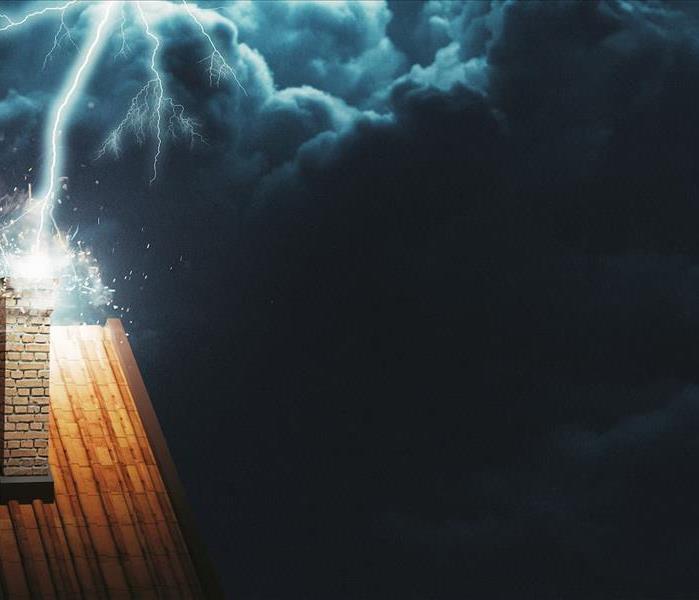How Do Storms Damage Roofs?
3/28/2023 (Permalink)
Storms can cause serious damage to a roof. From high winds to hail, these severe weather events can wreak havoc on well-maintained roofs. The most common types of storm damage are wind, hail, snow and ice, and lightning. Each type of storm presents a different risk to your roof and its own set of challenges when trying to repair the damage.
While roofs are designed to withstand strong weather, there is only so much they can do against the power of a storm. Knowing what to watch for and how to prepare before a storm hit can help you minimize the potential damage and keep your roof in great shape.
Different Types of Storms
The type of storm can have a huge impact on the damage it does to your roof.
Hail
Hail can cause a range of damage to your roof, depending on the size and speed of the hail. Smaller hail may just dent or scratch the surface of your roof, while larger hail can cause cracks and punctures. If your roof is made from asphalt shingles, hail can cause the granules on top to be knocked off. This reduces the protection of your roof and may lead to more serious issues down the line.
Heavy Rain
Hail storms can cause dents and holes, but heavy rain can be even more damaging. During a storm, rainfall increases the pressure on your roof, which can cause water to seep through the seams of your roof, resulting in water damage. Heavy rains can also overwhelm gutters, leading to water spilling over the sides of your roof and causing more damage.
High Winds
High winds during a storm can cause shingles to be torn away, leaving your roof exposed and vulnerable to water damage. The force of the wind can also break the branches from the trees, which can then crash through your roof. If there are any weak spots on your roof—such as missing or damaged shingles—the wind can take advantage of these and cause further damage.
What to Do to Prepare
To minimize the potential damage of storms, it's important to take steps before a storm hits. There are a few things you can do to help prevent storm damage and minimize the risk of a roof leak:
- Check your roof for weak spots, missing shingles, and other signs of damage before storms begin.
- Check your gutters to make sure they aren't clogged and can efficiently drain away water.
- Check missing or damaged shingles after a storm to see whether they can be replaced or patched.
- Ensure your attic is properly ventilated, and check for any signs of water leaks or damp spots.
- It's also important to trim any branches away from your home to reduce the risk of falling debris.
- Ensure that you have adequate and up-to-date insurance coverage on your home.
If a storm causes damage to your roof, it's important to act quickly. Remove any debris from your roof, and inspect the damage to determine if you need to call a professional. Ensure all the affected areas are properly sealed and covered to prevent further damage. If you're concerned that your roof may have been damaged in a storm, contact a professional roofer for an inspection. They can determine the extent of the damage and make recommendations for repairs or replacement.
No matter how severe the damage, it's important to take action quickly. Storms can cause extensive damage to your roof, so don't delay getting help. If you're unsure of how to proceed, contact SERVPRO of South and Northwest Grand Rapids at (616) 662-9700 with any questions, we're here to help!
We'll provide you with a thorough assessment and make sure your roof is as secure as possible. Don't let storm damage get the best of you: contact us today and put your mind at ease.




 24/7 Emergency Service
24/7 Emergency Service
